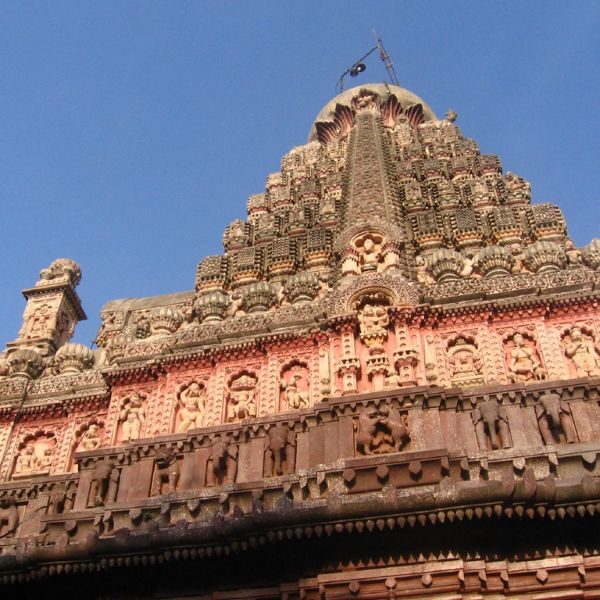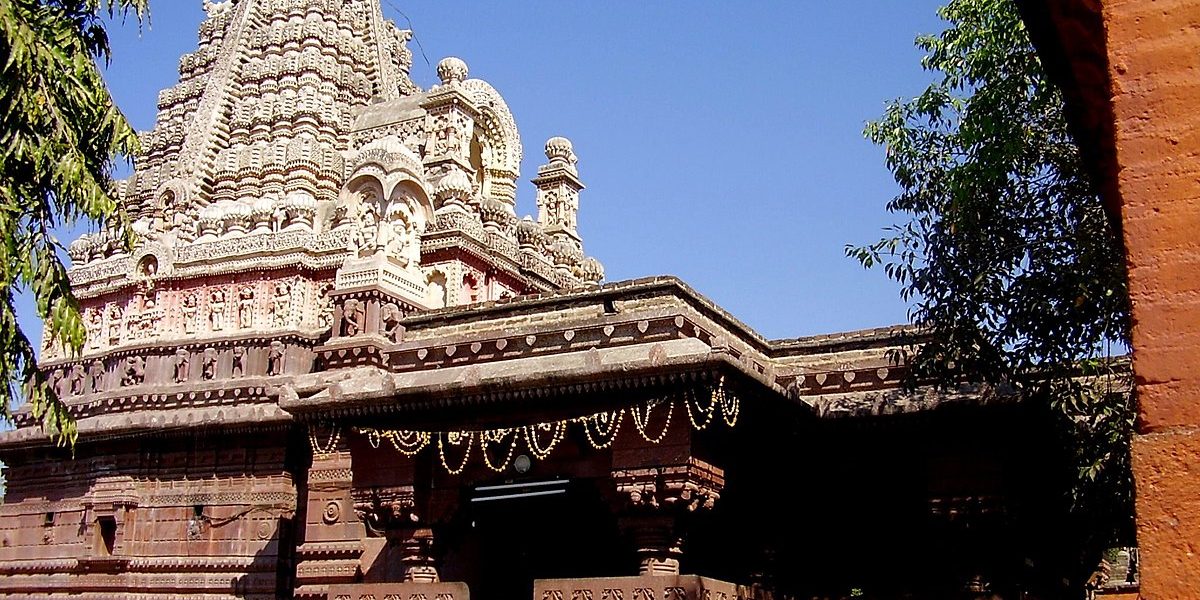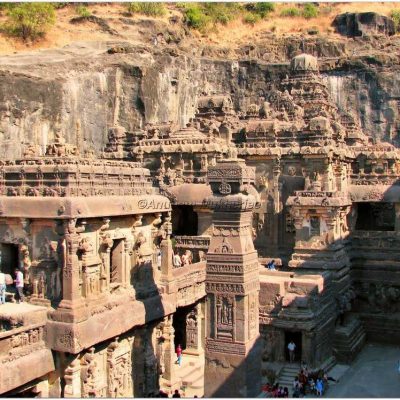Complete Guide about Ghrishneshwar Jyotirlinga Temple
-
Location
Ghrishneshwar Temple Official, Shri Ghrushneshwar, Ellora, Maharashtra 431102
-
Timings
5:30 AM to 9:30 PM
-
Entry Fee
No Entry fee


Ghrishneshwar Jyotirlinga Temple
About Ghrishneshwar Jyotirlinga
It may be found in India’s Maharashtra state in Ellora, close to Daulatabad.
Grishneshwar Jyotirlinga’s history
Both the Padma Purana and the Shiva Purana make reference of this temple.
The Delhi Sultanate devastated the location in the 13th and 14th centuries AD. Maloju Bhisale of Verul, the grandfather of Maratha emperor Shivaji, rebuilt the shrine in the sixteenth century.
Following the fall of the Mughal Empire in the 18th century AD, Queen Ahilyabai Holkar of Indore constructed the current building.
Special Features
The five-tiered tower, or shikara, of the red rock temple is its main feature. The ten incarnations (Dashavatars) of Lord Vishnu are seen engraved in red stone.
There is a courtroom supported by 24 pillars, each of which has carvings depicting a different Lord Shiva narrative or myth. The linga facing east is housed in the sanctum. In the courtroom, there is also a statue of Nandi, the bull, Lord Shiva’s mount.
Story of Ghrishneshwar Temple
There are a few myths surrounding this jyotirlinga.
According to a tradition, Kusuma was once a woman who would pray to Lord Shiva every day by submerging the Shiva Linga in a tank. The first wife of her husband killed her son out of jealousy over her devotion.
Even though Kusuma was grieving, she remained devoted to the Lord and maintained her faith. According to legend, Lord Shiva was moved by her devotion and revived her son. Lord Shiva appeared at this location as a jyotirlinga because Kusuma asked him to stay.
According to a different mythology, the Devagiri mountains were home to Brahmin named Brahmavetta Sudharm and his wife Sudeha. Since the couple was without children, Sudeha married her sister Ghushma to the couple’s spouse. Ghushma would create lingas, worship them, and then submerge them in the neighbouring lake, following the counsel of her sister. Finally, she received the blessing of a baby son. As time went on, Sudeha developed a jealousy of her sister, killed her kid, and dumped his body into the same lake where her sister was going to immerse the lingas.
Despite hearing through her daughter-in-law that Sudeha was involved in her son’s death, Ghushma continued to perform her daily rituals fully trusting in the Lord’s mercy. In accordance with her beliefs, she saw her son approaching her as she prepared to submerge the linga. She was confronted by Lord Shiva, who informed her of her sister’s horrific act.
Ghushma pleaded with the Lord for pardon for her sister. The Lord was pleased and gave her a blessing. He took the form of the jyotirlinga known as Ghushmeshwar since she requested him to remain there. Shivalaya was the name of the lake where Ghushma submerged the lingas.
Despite hearing through her daughter-in-law that Sudeha was involved in her son’s death, Ghushma continued to perform her daily rituals fully trusting in the Lord’s mercy. In accordance with her beliefs, she saw her son approaching her as she prepared to submerge the linga. She was confronted by Lord Shiva, who informed her of her sister’s horrific act.
Ghushma pleaded with the Lord for pardon for her sister. The Lord was pleased and gave her a blessing. He took the form of the jyotirlinga known as Ghushmeshwar since she requested him to remain there. Shivalaya was the name of the lake where Ghushma submerged the lingas.
Facts about Ghrishneshwar Jyotirlinga
Other names for Grishneshwar are Ghushmeshwar and Kusumeshwar.
Men are required to enter the temple bare-chested.
The smallest jyotirlinga temple in India is located here.
Less than a kilometre separates you from the Ellora caves, a UNESCO World Heritage site.
While you are welcome to visit this spiritual site at any time of the year, it is recommended that you do so between the months of October and March. Any devotee would consider visiting this historic and holy location during Mahashivratri to be the ultimate delight!
Dekho Apna Desh
The DAD of Tourism
Get Direction to Ghrishneshwar Jyotirlinga Temple
Near Attractions
















